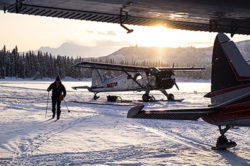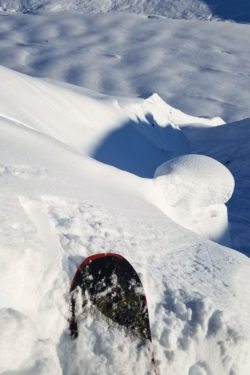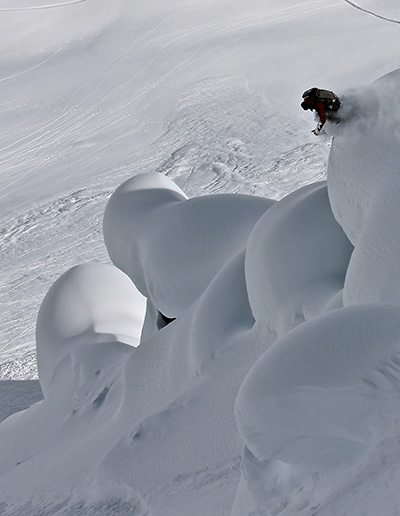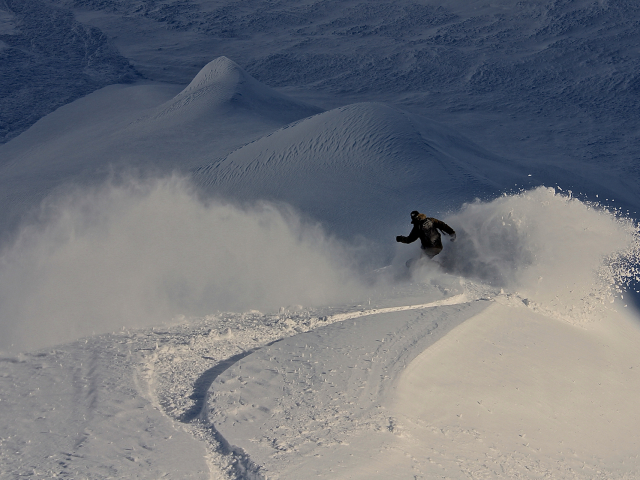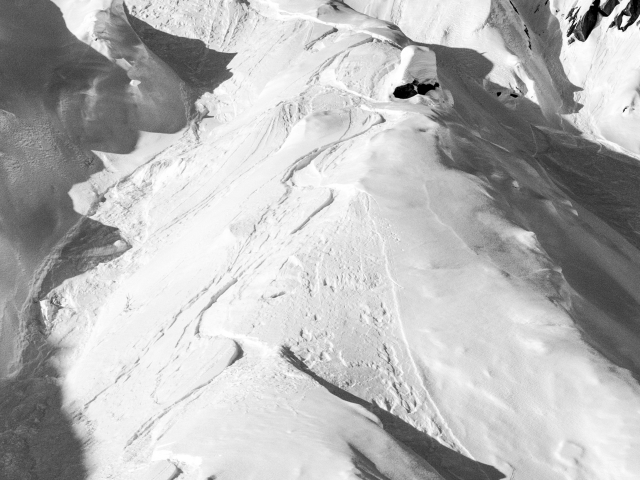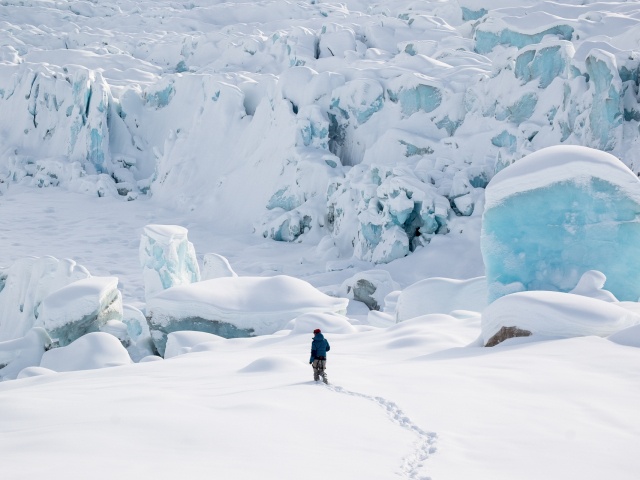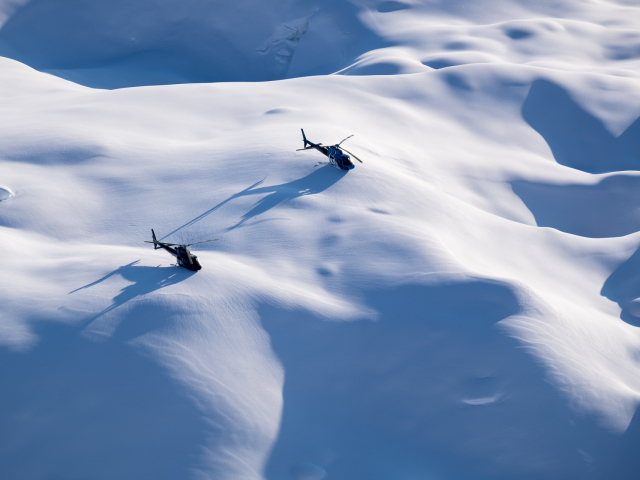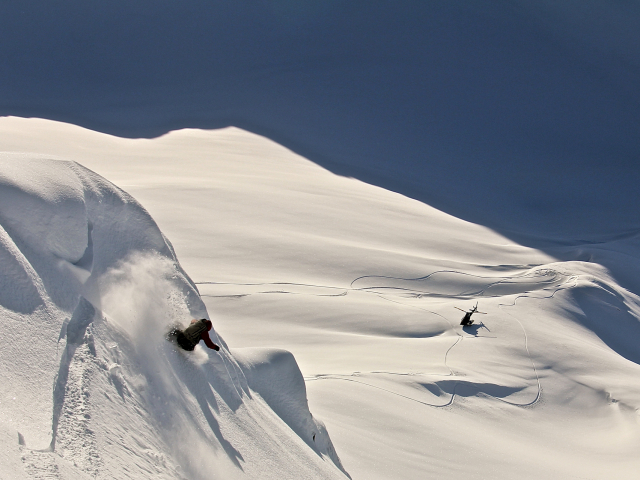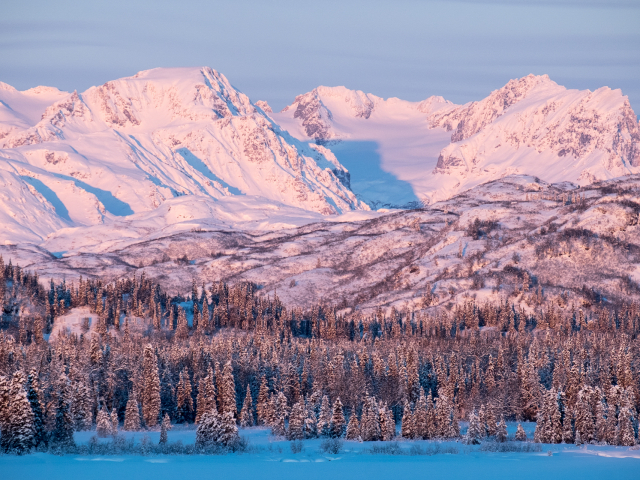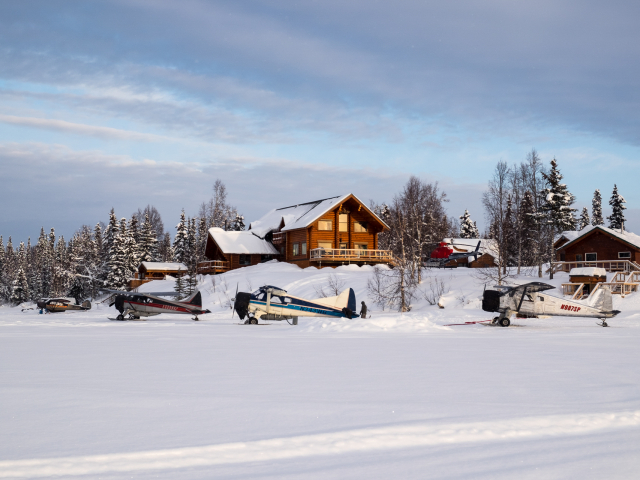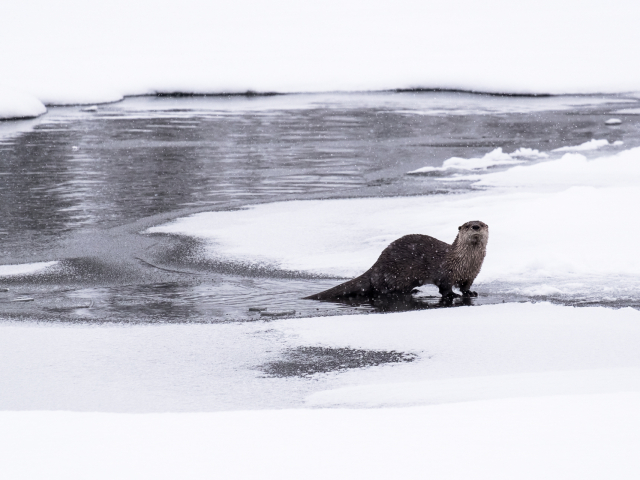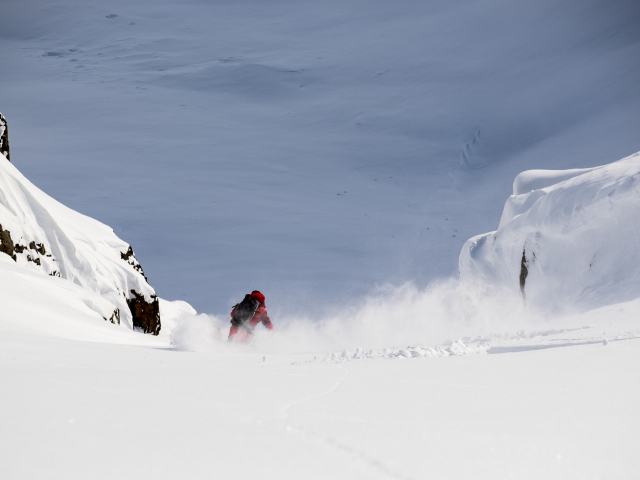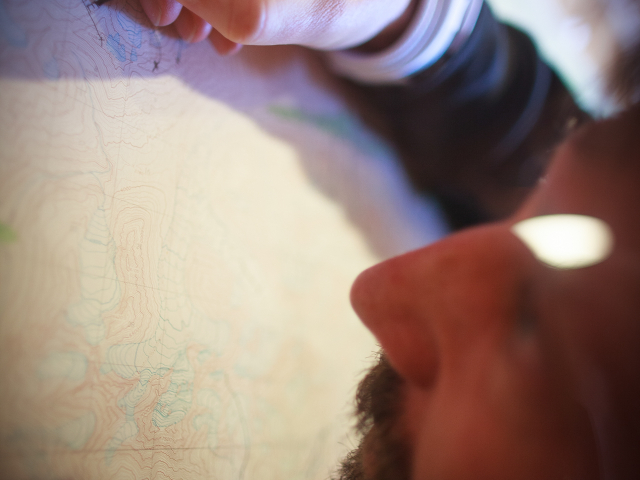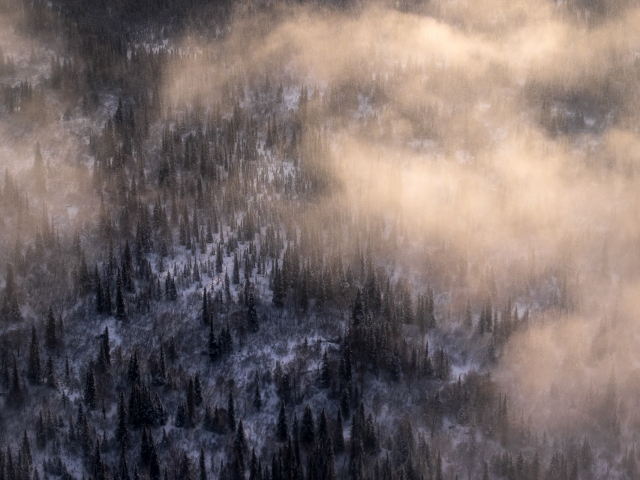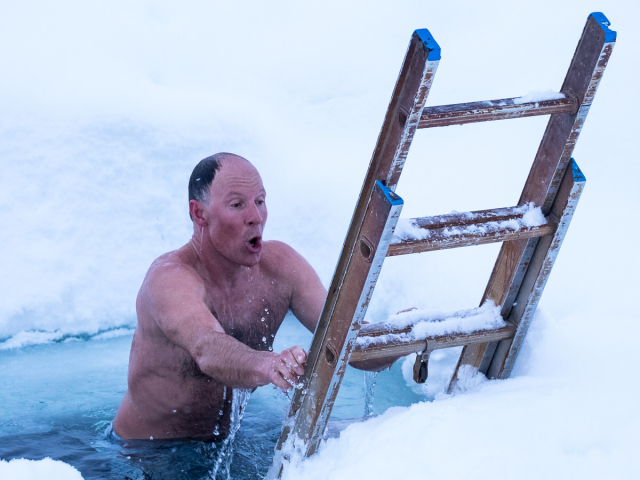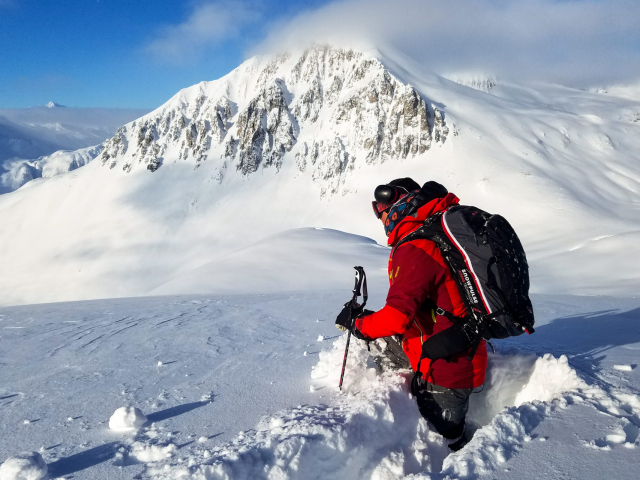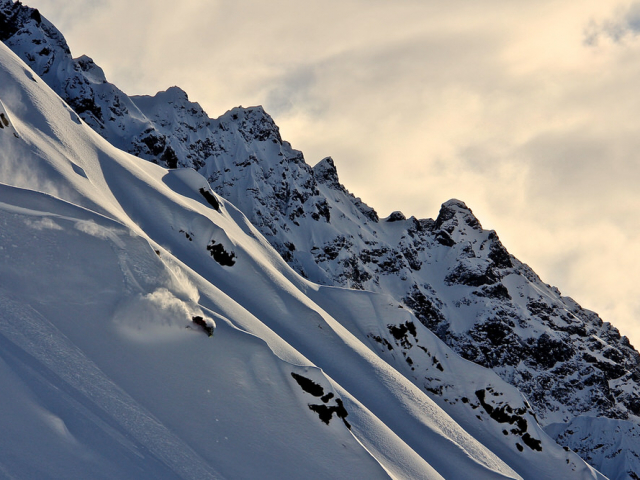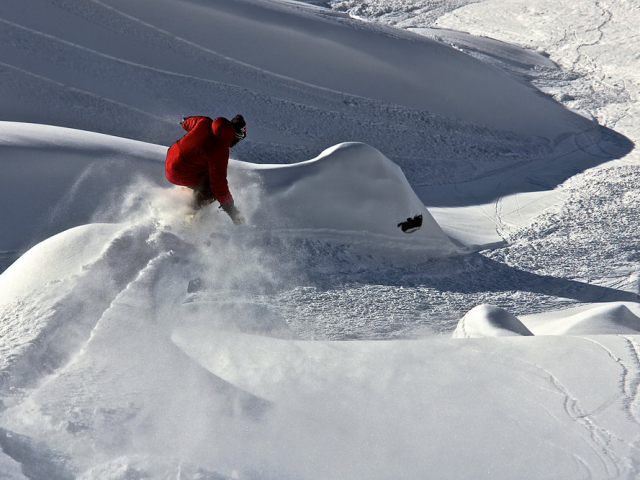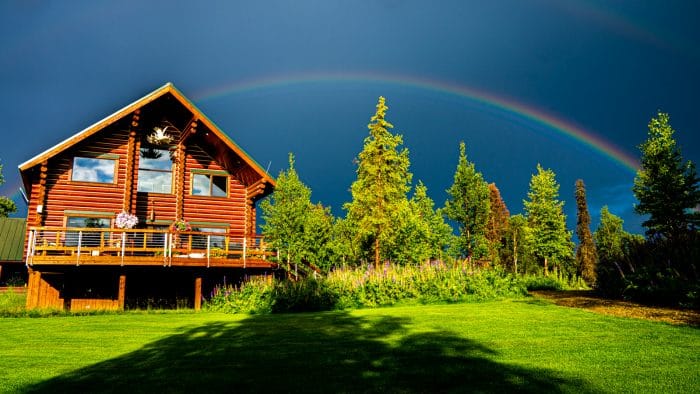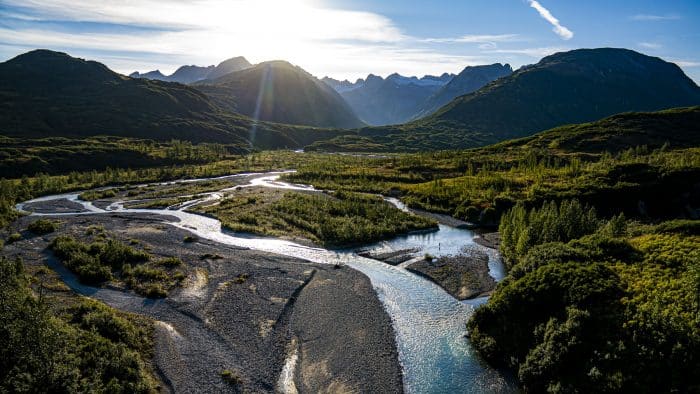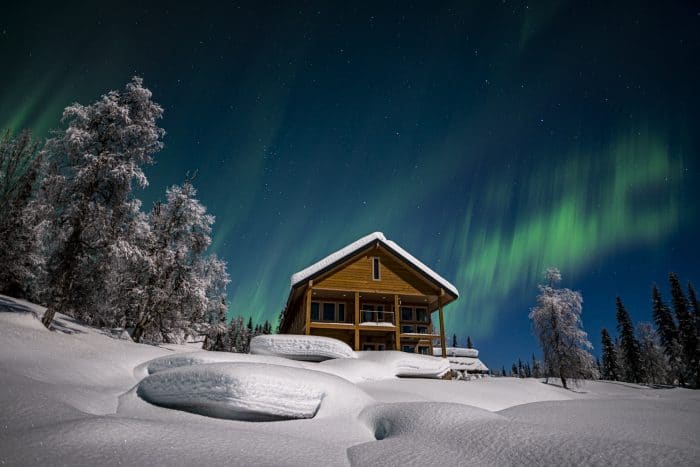The Snowboarder’s Journal – Alaska Powder Island
Alaska Powder Island By Colin Wiseman
“I knew it was gonna be deep, but I didn’t think it was gonna be this deep,” Tommy Moe said.
Moe’s a big, powerful dude. He won the Olympic Downhill ski race in Lillehammer, Norway in 1994, and took silver in the Super G. And he was wallowing through belly-deep blower in Alaska’s remote Tordrillo Mountains.
Tordrillo Mountain Lodge(TML)’s 2017 heli season. We’d just been delivered into the alpine from TML’s private home base on Judd Lake, around 40 miles northwest of Anchorage, AK. The day prior, we’d shuttled in via bush plane across Cook Inlet and a sizeable expanse of frozen tundra—over moose, wolves, ice fisherman and slednecks braving a 0-degree cold snap and intermittent inclement weather during a deep Alaskan winter.
Up in the Cold Creek drainage—essentially the front porch of the TML tenure—Moe was visibly excited, eyes wide, smiling. We were facing north and could see deep into the Alaska Range, all the way to Denali. After digging a snow pit to assess conditions, Moe pointed out the significant peaks and drainages that splayed out for 20-plus miles, many of which they had ridden in the past dozen years of operating in the area, a few of which still hadn’t seen tracks.
That sense of exploration, of opening up new zones is one reason why Moe started TML with co-owner Mike Overcast. They also wanted to bring a unique brand of heliskiing to Alaska: one that provides the British Columbia-style lodge experience in the Alaskan wilderness. They setup shop 40 miles into the middle of nowhere to provide something different in the AK heli scene.
“We’re so far away from anywhere that you have to have a place to cache fuel for the helicopters,” Overcast later told me. “If you need a place to put the fuel, you need generators to pump the fuel. If you’re gonna have generators, you may as well have a lodge. It all fit into our goal of running an outpost and have it be a lodge atmosphere. The guests go out and hit it hard in the field, then they come back and do dinner, take a sauna or a hot tub, maybe do some partying, and they do that seven days in a row.
“It’s like living on an island in a sense,” Overcast continued. “The balance only works if everyone’s getting along. How that projects onto the guest’s experience is an important thing. We have to make sure we have all the right people in the right places doing their jobs, and that we can count on it.”
Running a heli op out of the Alaskan wilderness presents its challenges. But Moe and Overcast dropped into TML with plenty of experience. They met in Overcast’s hometown of Jackson Hole, WY, when Moe moved there shortly after his Olympic success. Moe kept racing until the ‘98 games, but during that time he and Overcast also founded Chugach Powder guides together out of Girdwood. During the late ‘90s they started venturing into the Tordrillos in the springtime to fish for king salmon and ride corn snow. Then, in 2005, they sold the operation in Girdwood, bought an abandoned fishing lodge on Judd Lake, and started TML. Nowadays, they operate nine months of the year, offering everything from ice climbing, rafting, fishing and hiking during the summer to deep winter powder. The latter is what I was there to experience.
The author scores first tracks of the morning on “Dolomite Couloir.” Video: Gordy Megroz.
That first day was pretty mellow from a riding standpoint (although the heli ride afforded some amazing opportunities for mind-surfing an assortment of couloirs in the area). Being opening day for the operation, it was understandable—you can’t just jump into a 45-degree notch before you know the snowpack, the abilities of all in the group, the countless variables that come with a fresh winter season. Our crew was a mixed bag when it came to ability level and preferred mode of descent. There was Cindy, a magazine editor from Aspen who skied; Gordy, a strong skier and freelance writer from Wyoming; Chris, a tele-skier from Colorado who had climbed plenty of big mountains but skied few; Richard, a snowboarding captain of a private yacht from the UK who rode a few dozen days per year; and myself, a rider from northwest Washington State. The other group consisted of a handful of athletes along with assorted media folk who were there to produce marketing collateral for TML and their outerwear partner, Marmot.
Regardless of a significant gap in ability levels, we slowly ramped it up through a half-dozen lines, moving towards a few steeper pitches by the end of the day. It was mini-golf by Alaskan standards, but waist deep and fast when the pitch steepened. By day two, the snow began to settle a bit and the guides gained confidence in the snowpack. They also got to know the crew and moved us into a few bigger lines.
As the week rolled on, we found a rhythm—I’d usually handle a radio and drop last, sometimes swapping out with Gordy to get a few first tracks myself. Moe was that rare kind of guide who knew how to get everyone into the kind of terrain that neared their limits without pushing anyone past the point of safety. Scattered storm fronts kept us largely confined to terrain within 10 miles of the lodge, but there was plenty of room to work out of Cold Creek and the adjacent drainages. Then the highlight: bluebird on day four.
Weather holds all the cards on any mission in to the mountains, but nowhere is it more crucial than when heliboarding in Alaska. With treeline hovering somewhere near 1,500 feet, all riding is done in the alpine. If there are clouds on the horizon, you can’t stray too far from the lodge lest you become grounded by flat light and high winds. During periods of significant high pressure, TML can go pretty deep into their 1.2-million acres of tenure. As Overcast said, “We utilize the De Havilland Beaver and Super Cub (ski planes) and Astar (helicopters). It’s part of our model that differentiates this operation from any other in the world. Guests move out into the field with the planes and the helicopters simultaneously. It means we don’t have to start skiing right out the backyard—we can fly 40 miles first. We can move the helicopter into position, move the guests into position, and have fuel flown to remote locations and fuel directly from the airplane into the helicopter, so we can stay in the field all day. Our range of opportunity goes all the way from down in the Neacola Mountains to the Northern Tordrillos.”
And while we didn’t need a ski plane on that fourth day, we did find some spectacular terrain just past the massive expanse of the Triumvirate Glacier. There, about a 12-minute flight southwest from the lodge, we could see the infamous slot couloir that Travis Rice rode while filming for the Fourth Phase. While we wouldn’t be dropped atop anything that gnarly, Moe put us on my kind of dream zone. They call it “Spinal Tap.” First, we rolled off into a mellow bowl (Moe let me hang a left into a small chute after the others descended an open slope) before coming to a series of tight chutes with snow-caked spines to the left and right. He sent Gordy down a little spine and had me follow. Then, once we’d had a good look from the bottom, he took us up again. This time, he sent me first. The spine pushed past 45 degrees with a couple of blind rolls, a thin ridge zig-zagging for 20 turns from the top, and a nice channel for sluff to roll off to my right. The snow was perfect: cold, stable, and bottomless. It was the kind of line for which you come to Alaska, one that will hold a prominent spot in my own personal top-ten list for years to come. And looking up at this single face of thousands in the TML tenure, it was clear that this was just one of many descents that could find a place in my dream line memory banks given enough time in the Tordrillos.
In the end, we were able to ride five out of six days, sampling everything from high-walled tubes to 40-degree ramps, and long, rolling, wide-open descents. Between hot saunas and cold plunges in a hole chipped out of frozen Judd Lake, we found time to get to know one another and enjoy the extracurricular activities around the lodge: riding fat bikes and xc skiing, snowshoeing, gourmet dinners, and so forth. It was a classic Alaskan lodge experience. And every night I’d go to sleep with a view of the Tordrillos hanging in the distance, shred-ready, only a short flight from our outpost on powder island.
A week of winter heliboarding at Tordrillo Mountain Lodge starts at $13,500 and includes five Hobbs hours per group of four, meaning you can usually ride up to five out of six days as part of the package. Their winter season runs from mid-February through late April, Kings & Corn goes early June through early July, and their summer adventure packages start in July. For more information and bookings, visit www.tordrillomountainlodge.com.







